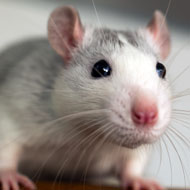Data shows that seabirds still severely affected by outbreak.
The ongoing outbreak of avian influenza is continuing to hit seabird populations in Scotland, data released by NatureScot has revealed.
From 3 April to 1 October this year, a total of 9,610 dead and sick wild birds were reported. Most of the reports were from along the east coast.
Guillemot was the species with the most reported mortalities (3,519). Kittiwake was the second most affected species (3,367), followed by black-headed gull (834).
Tern species have also been significantly affected. At Forvie National Nature Reserve, more than 40 per cent of this year’s common, Sandwich, and Arctic tern chicks died, much higher than normal mortality rates.
Although overall deaths of seabirds in Scotland were low in spring, the number of mortalities started to increase in June and peaked in mid-July. At the peak, 2,300 sick and dead birds were reported in two weeks.
However, there was better news for great skua and gannet. Both experienced high mortality rates from avian influenza in 2022, but there have been far fewer reported mortalities this year.
NatureScot has suggested that gannets may have developed some immunity to the virus. Research is currently being conducted to find out more.
Eileen Stuart, NatureScot’s deputy director of nature and climate change, said: “With very few great skua and gannet deaths this summer, we are hopeful that some wild birds are building immunity to HPAI.
“But other species, such as kittiwakes and terns that were impacted last year, have still been greatly affected this year. The research we and our partners in the task force are doing will help us better understand why this might be the case.
“Our collective focus now must be on ensuring we have positive measures in place to support the recovery of species impacted by the outbreak – species which are already facing many pressures on their survival.”
Scotland’s Avian Flu Task Force is currently preparing for the arrival of wintering waterfowl. Last winter, Greenland barnacle geese on Islay, mute swans in Central Scotland, and herring gulls in the Firth of Forth all had high mortality rates.
Image (C) Shutterstock






 The Greyhound Board of Great Britain has published new vaccination guidance, with all greyhounds registered from 1 January, 2027 required to have the L4 leptospirosis vaccination, rather than L2.
The Greyhound Board of Great Britain has published new vaccination guidance, with all greyhounds registered from 1 January, 2027 required to have the L4 leptospirosis vaccination, rather than L2.
